The Best Medical Alert Watches of 2025: Expert Reviewed
The Medical Guardian MGMove is our pick for best overall medical alert watch.
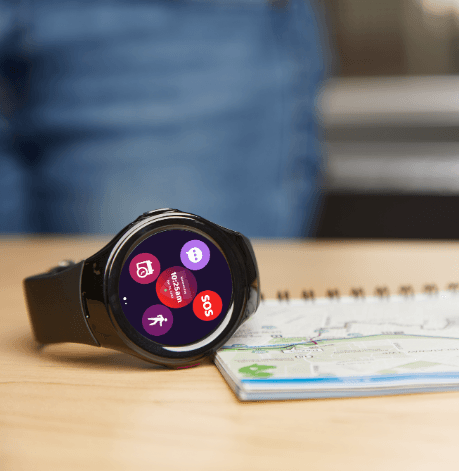
- Medical Guardian MGMove is our pick for Best Medical Alert Watch Overall.
- Subscription prices for watches in this article range from $38.95–$84.95.
- Medical alert watches can increase a person’s sense of freedom and security.
At NCOA, we take the time to research, test, and recommend products that aim to help you live a healthier life. We’ve spent more than 3,000 hours researching medical alert systems to give you the most accurate product reviews. To find the best medical alert systems, we:
- Consulted with doctors and licensed adult caregivers who specialize in working with older adults
- Put more than 35 devices through a series of 16 different tests at our in-house lab
- Mystery shopped more than 15 brands
- Surveyed more than 1,000 medical alert system users and caregivers
- Interviewed experts on older adults falls risk
- Worked with older adults to test medical alert systems and get their opinion
- Read thousands of verified customer reviews
We’re constantly testing new medical alert systems to give you the most accurate and up-to-date recommendations. Read more about our medical alert system review methodology.
Our pick for the best medical alert watch
- Medical Guardian MGMove: Best Overall
- Bay Alarm Medical SOS Smartwatch: Easiest to Use
Medical alert watches can be a great alternative to traditional medical alert devices because they look like regular smartwatches. You might feel more comfortable wearing a medical watch since other people won’t be able to tell it’s actually for emergencies. And because the most effective medical alert device is the one you wear consistently, choosing a medical alert watch can help increase your sense of safety as you live your life.
But many people are reluctant to wear a medical alert device because of their design. They worry the devices make them look older or more frail.1
We’ve tested and reviewed several popular life alert watches on the market. In this article, we’ll explain why we chose the Medical Guardian MGMove as our top pick, how it compares to other brands, and what you should consider before choosing the right medical alert watch for you.
Comparing the best medical alert watches of 2025
| Our rating | Avg. response time (seconds)* | Battery life (hours) | Charging time (hours) | Warranty (days) | |
| Medical Guardian MG Move | 9.9 | 29 | 24 | 1–2 | 90 |
| Bay Alarm Medical SOS Smartwatch | 9.8 | 22.3 | 6-18 | 2-2 |
*Response times can vary based on connectivity type, location, and more. We consider an average response time of less than 60 seconds as passing the test.
Our reviews of the top medical alert watches
Medical Guardian MGMove: Best Overall
We chose Medical Guardian MGMove as our Best Overall medical alert watch because it is user-friendly and has a long battery life. In our testing, we found it had the shortest response time (just 29 seconds on average) and accurate GPS location services.
Medical Guardian MGMove
Best OverallNCOA Exclusive Offer
Free equipment on our MGMini with the code: NCOAFREE
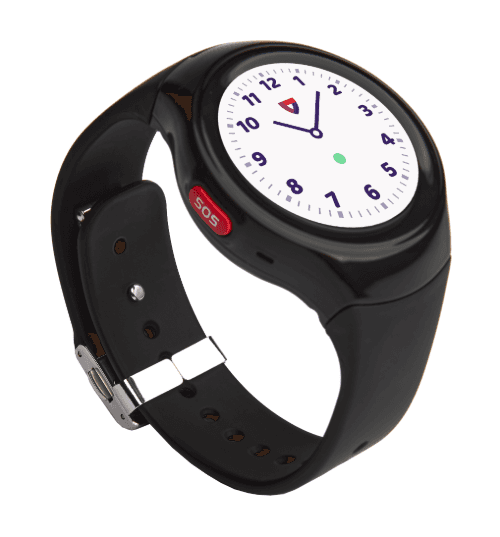
NCOA Exclusive Offer
Free equipment on our MGMini with the code: NCOAFREE
- Comfortable and discreet
- Fast response time
- Reliable GPS tracking
- Avg. response time: 29 seconds
- Battery life: 24 hours
- Charging time: 1–2 hours
- Fall detection: Yes, $10 extra/month
- GPS tracking: Yes
Why we chose the Medical Guardian MGMove as Best Overall
We chose the Medical Guardian MGMove as the Best Overall medical alert watch because it combines a faster than average response time with a user-friendly interface and long battery life. Our testers found this watch to be easy to set up, use, and wear.
We like that the Medical Guardian MGMove includes weather and step counting apps to help encourage activity. The optional Support Circle apps are also helpful for care partners to connect as needed or set daily reminders.
The MedicalGuardian MGMove connects to AT&T’s cellular network, but unlike traditional smartwatches, you don’t need to have a smartphone or AT&T contract to use it. It has a 24-hour battery life and takes about one hour to charge. The charging cradle lights up to let you know you’ve connected the watch correctly.
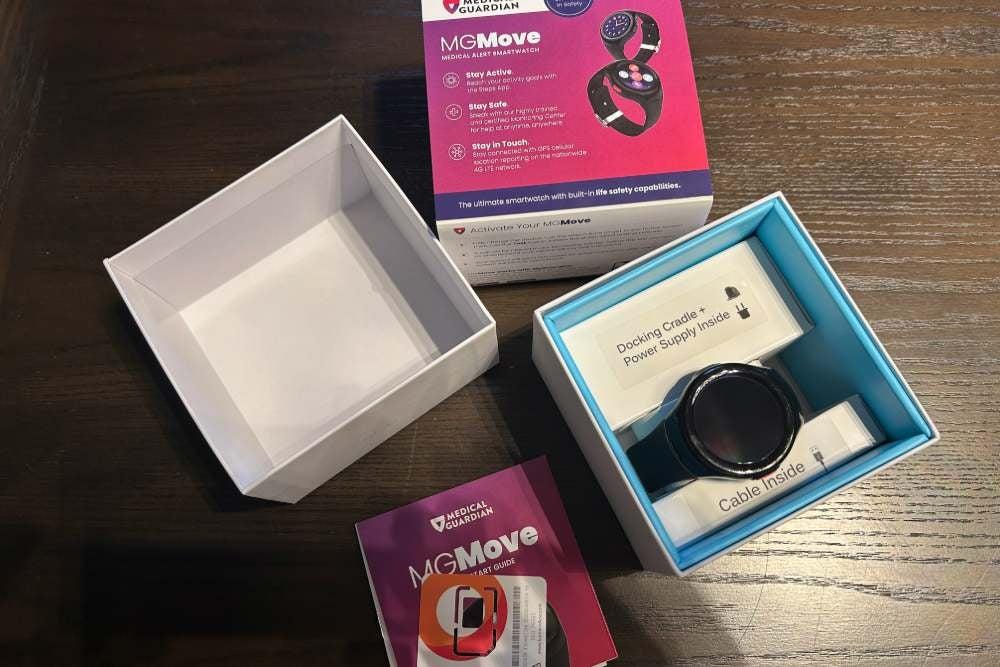
While the Medical Guardian MGMove has many features we enjoy, it does come with extra costs. You can expect to pay $199.99 for the watch itself, as well as the monthly $42.95 monitoring center subscription fee. If you want a device that doesn’t carry an equipment fee, you may want to check out a more affordable brand, like MobileHelp. You can read our MobileHelp review to help you decide.
The Medical Guardian MGMove also has a watch band that cannot be changed. This could be a drawback if you prefer the option to update your watch’s look. For example, the UnaliWear Kanega watch has three different color options to choose from.
Our testing experience with Medical Guardian MGMove
Our testers liked the Medical Guardian MG Move because of its high-quality appearance and minimal setup. “I loved the packaging and aesthetic,” one tester said. “It feels very high quality while being simple.” The watch also looked discrete and felt comfortable to wear. “It's not much bigger than an Apple Watch,” said a tester.
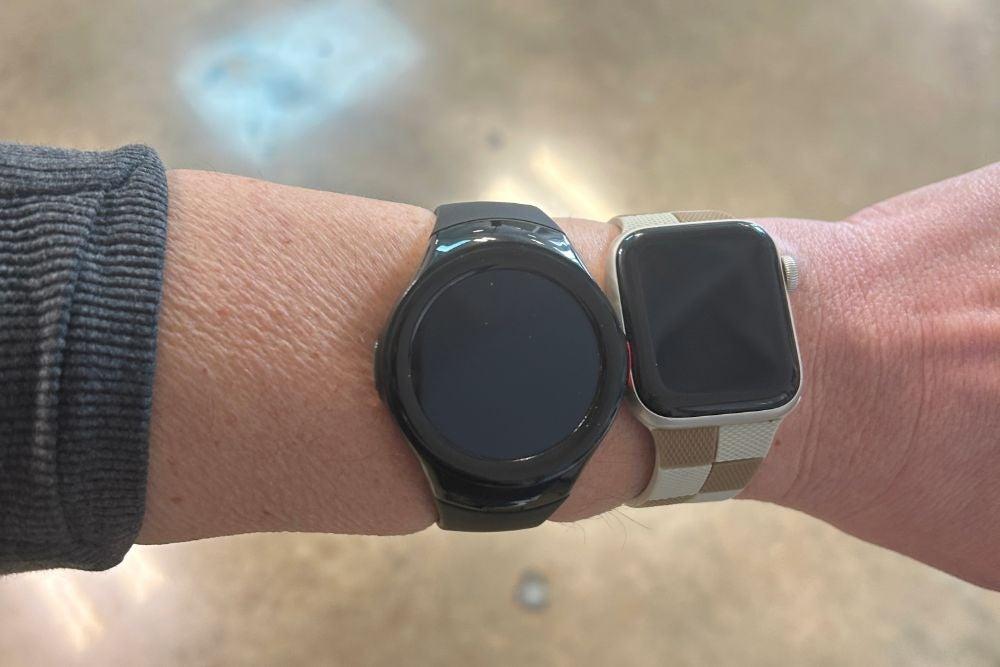
To get started, you just plug the charging cable into the watch’s dock and set it into the cradle. “If you do it wrong, " said a tester, “it doesn't light up, so you automatically know you need to swap its position.”
Once set up, the testers found it easy to charge their watches. There was a circle on the watch that became more filled in the more charge the device had. Testers found this to be a very easy way to see, at quick glance, how much charge was on their watch. Overall, testers found the setup process seamless. “I was impressed with how fast it charged and how easy the setup was,” one tester said.
When we tested the watch’s GPS abilities, we pushed the button while at a large suburban park, a Walmart, and an urban office. The monitoring center staff were able to locate us down to each individual address—even in the large suburban park. Especially if you live in a rural area, you may want to run a test like this yourself during your device’s warranty period.
We did this test to ensure the watch’s GPS locating services are accurate, so you don’t have to worry about help finding you wherever you might be while out.
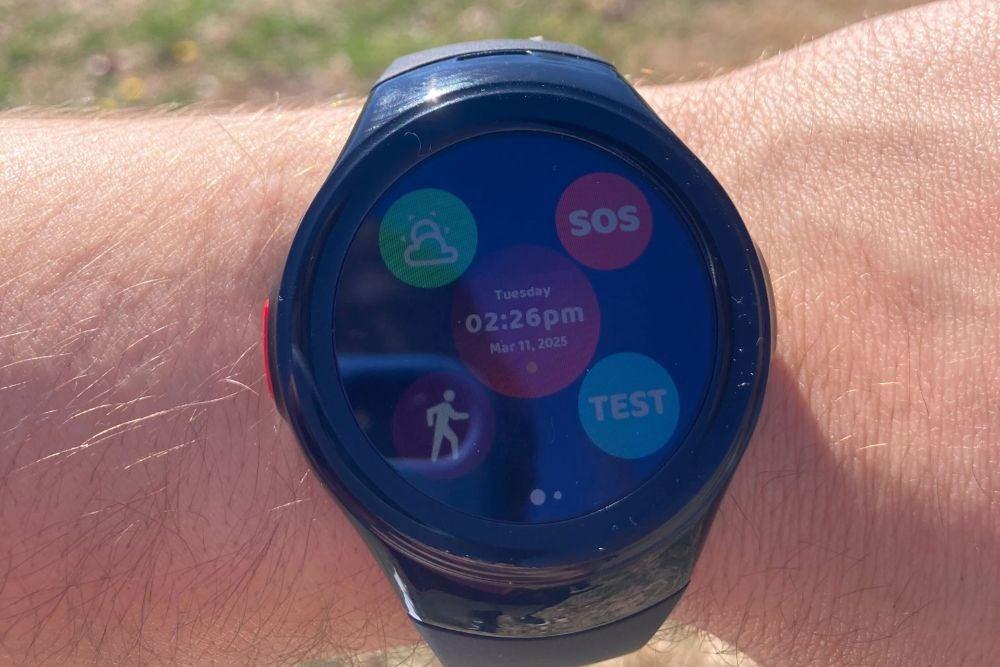
We also liked the fact that the MGMove has a separate testing button, which is unique to this model. This makes it easier for users to test their device without worrying they might be tying up a helpline. But once you press the test button, you can’t cancel the call. We were impressed by the average 20 second response time (one call was answered in 14 seconds—the fastest response time we recorded), which is much faster than average. The other watches we tested all had responses of less than 60 seconds, which we still consider to be excellent, but the MGMove struck us with its speed.
But if you have a high fall risk, you should consider a more traditional medical alert device. Medical alert systems that you wear around your neck tend to be more accurate at sensing falls because the fall detection technology works best if it is worn against the chest.2
For more information, see our Medical Guardian review.
Medical Guardian MGMove pros and cons
Pros
- Comfortable to wear
- User-friendly design
- Easy-to-follow prompts and communication
- Clean, discrete look
- Reliable GPS tracking
- Long battery life
- Fast charging time
Cons
- Upfront equipment costs are expensive
- Test calls cannot be cancelled
- Band cannot be changed
The Medical Guardian customer experience
Our testers gave Medical Guardian a 10 out of 10 for its customer service. Testers consistently found the staff to be professional and friendly. We also like that they have several contact options including a chatbot, message portal, and phone number. This makes it easier for users to ask questions about their watch in the way that suits them best.
- Warranty and trial period: Medical Guardian offers a one-year warranty that covers any defects. You can purchase additional protection for damage, loss, theft, or wear and tear for $6.99 per month. Medical Guardian does not offer a trial period.
- Customer service: If you need additional help, you can visit the Medical Guardian customer support page to fill out an online contact form, call, or send an email.
- Phone: 1-800-313-1191, Monday through Friday from 8 a.m to 8 p.m. ET, and Saturday through Sunday from 9 a.m. to 5 p.m. ET (technical support only).
- Chatbot: Medical Guardian’s website has a chatbot option for general questions or assistance for current customers.
Bay Alarm Medical SOS Smartwatch: Easiest to Use
Bay Alarm Medical’s SOS Smartwatch earned its place as our Easiest to Use for its clear, simple design. Our testers were consistently impressed with the SOS Smartwatch’s user-friendliness, noting its well-labeled packaging, clear instructions, and straightforward layout.
Bay Alarm Medical SOS Smartwatch
Easiest to UseGet It Before Christmas Sale:
Up to 40% off. Plus free shipping and free month on select plans
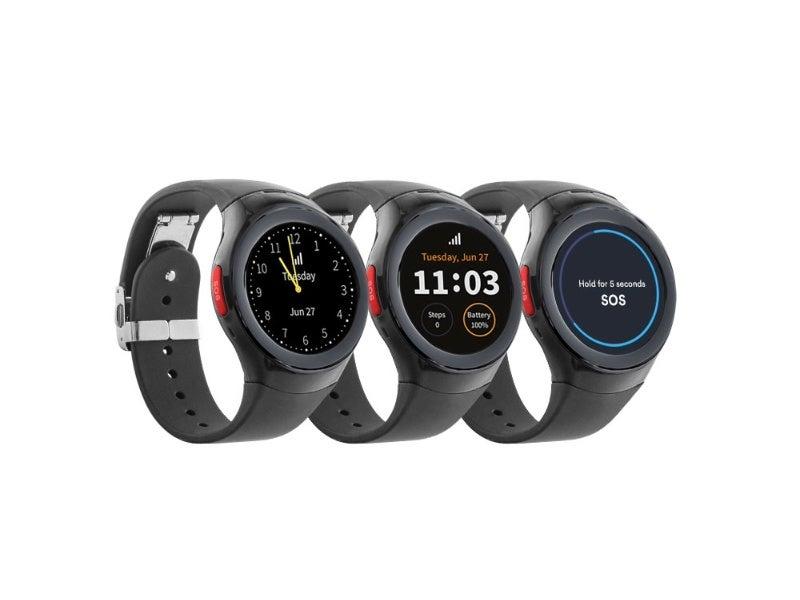
Get It Before Christmas Sale:
Up to 40% off. Plus free shipping and free month on select plans
- Quick call cancellation
- Caregiver tracking included
- Sleek profile and discreet appearance
- Average response time: 22 seconds
- Battery life: 6-18 hours
- Charging time: 2-3 hours
- Fall detection: Yes, $10 extra/month
GPS tracking: Yes
Why we chose the Bay Alarm Medical SOS Smartwatch as the Easiest to Use
The Bay Alarm Medical SOS Smartwatch stood out to our testers right away because it’s so simple to use. You don’t need to connect it to a smartphone, download apps, or follow confusing instructions. Everything you need, like the time, weather, and step count, is already loaded onto the watch. It even talks to you, letting you know when the battery is low or fully charged, so you won’t be caught off guard.
We also like that the SOS Smartwatch looks like a regular smartwatch. This makes it more discreet for people who want a device that doesn’t stand out. One feature our team really liked was the ability to cancel an alarm if you press the SOS button by mistake. That means you won’t have to talk to the call center if you didn’t mean to ask for help.
The SOS Smartwatch now comes with an optional fall detection feature for an extra $10 a month. It uses AI to learn your movements, which helps reduce false alarms. And if it does think you’ve fallen when you haven’t, you can cancel the alert before it contacts the monitoring center.
We also like the Smartwatch’s GPS tracking. So, if you press the SOS button, the monitoring center can see where you are and send help. Right now, the GPS doesn't work with the caregiver app, but the company is working on adding that feature soon. That way, caregivers will be able to see the watch's location in real time.
Still, we found two downsides. First, the battery life is short. It usually lasts about 6–8 hours, though in some cases it can go up to 18 hours, depending on settings like screen brightness and cell signal strength. That’s much less than the Medical Guardian MGMove, which can last up to 24 hours.
Second, the wristband is hard to put on by yourself, especially if you have arthritis or trouble with hand movement. While these flaws were not dealbreakers, they’re definitely worth noting.
Bay Alarm SOS Smartwatch pros and cons
Pros
- 15-day trial period
- Free caregiver app with all mobile devices
- Includes Vial of Life (a medical info container for first responders)
- Excellent customer service
- Fast response time
Cons
- No separate testing button
- Shorter battery life
- Watch band can be difficult to put on
Our testing experience with the Bay Alarm SOS Smartwatch
Our testers found the SOS Smartwatch easy to set up. Everything in the box was clearly labeled, so there was no confusion. “The user manual is very easy to read and understand. The text is large and clear. There is also a speaking feature to let you know the device is charged before you put it on,” said one tester. These details help new users get started right away.
Another tester explained further, “All you have to do to turn it on is put it on your wrist and hold down the home button,” she said. The setup was that simple.
Using the watch was also easy. When we tested how to connect with the monitoring center, we were impressed with the step-by-step help. “The watch spoke out loud, telling me to hold the button for five seconds, and then on the screen I had five more seconds to cancel with a very large button indicating I can,” said one tester.
The only real issue our team had was putting the watch on. One tester said they took off a point because it was tough to do alone the first time.
Overall, our testers were pleased. “It was easy to call, the instructions were clear, and the operator was helpful when we answered. You had the option to cancel, and the buttons were clearly labeled,” said a tester.
Our team agreed: the Bay Alarm SOS Smartwatch earned its spot as the Easiest to Use.
The Bay Alarm Medical customer experience
- Warranty and trial period: Bay Alarm Medical doesn’t offer a free warranty, but you can buy a warranty for $2.95 to $4.95 per month. The trial period is 15 days.
- Financing: Yes
- Customer service: If you need additional assistance, you can visit the Bay Alarm Medical customer support page.
- Phone: 877-522-9633, Monday through Friday from 6 a.m to 6 p.m. PT, and Saturday through Sunday from 8 a.m. to 4:30 p.m. PT.
- Email: cs@bayalarmmedical.com
Other brands to consider
While the Medical Guardian MGMove is our top pick, there are other medical alert watch brands on the market you might want to consider. These brands include:
Unaliwear Kanega Watch
The Unaliwear Kanega Watch is a high-quality device with fall detection, but its limited features and extremely high price make it impractical for some users.
What we like:
- The Kanega looks sleek and has three bands to choose from
- Fall detection doesn’t cost extra
- It comes with extra rechargeable batteries so you don’t have to take the watch off to charge it
What could be better:
- At $299 for the equipment and an $84.95 monthly subscription, this watch is much more expensive than others on the market
- It doesn’t have an app
- No location tracking for designated contacts
- Users have to call a phone number to set up the watch, which creates a barrier for access
- The rechargeable batteries sometimes fell off the watch when we were wearing it to test
Apple Watch medical alert
An Apple Watch is a popular device that connects to your smartphone, providing much more functionality than a medical alert watch alone. But because it’s a smartwatch first and a medical alert device second, it falls short on fall detection.
What we like:
- Sleek and attractive design means more adults might be willing to wear one consistently
- They’re very customizable, with bands you can buy from Apple or compatible versions you can get from sites like Amazon
- Range of accessibility features like the VoiceOver and Zoom functions
- You can pair the watch to a smartphone, which makes it more useful than a watch that’s only for medical alerts
- Because it is a smartwatch, you don’t have to pay a monthly subscription fee, but it will use your smartphone’s data plan
What could be better:
- Apple Watch ($249–$1,000+), is expensive compared to the MG Move ($199 equipment fee)
- You need a smartphone and cellular plan for the watch to work
- Apple Watch’s fall detection only detects hard falls, like if you were to fall off a mountain bike. Most older adults also experience soft falls, such as slumping off a couch to the floor, or falls where they take protective steps to catch themselves partially on the way down.2 The Apple Watch’s inability to register soft falls makes it less effective for adults with fall risk.
- It connects directly to 911, not a monitoring center
How do medical alert watches work?
Medical alert watches work by connecting you to an emergency monitoring center when you either push a button or experience a fall. The staff at the center speaks to you about your emergency and contacts medical professionals and designated family members or friends if you need help.
Medical alert watches typically have GPS tracking, so the monitoring center staff can give your exact location to the first responders. Fall detection is especially helpful because when the device senses a fall, it connects to the monitoring center automatically. This means help is on the way even if you don’t have the ability to push the button.
“I strongly recommend medical alert devices to my patients not as a last resort, but as a proactive wellness tool,” said Keli Spencer, DC, in Grand Falls, New Brunswick, Canada. “In practice, I pair these devices with balance work, strength training, and joint mobility strategies to reduce fall risk. But here’s the truth: Even the strongest clients can trip over a rug or lose balance unexpectedly and that’s when having a device could mean the difference between a quick recovery and a long road back.”
Who should use a medical alert watch?
Medical alert watches are designed to connect you to an emergency monitoring center if you’ve fallen or need sudden medical help. If you are wondering whether or not you’d benefit from a medical alert watch, consider these factors:
- People who live alone or far away from a support network would benefit from the immediate assistance a medical alert watch provides
- Anyone with medical histories or diagnoses that put them at risk of sudden medical crisis would benefit from the 24/7/365 monitoring
- Those recovering from surgery or experiencing mobility limitations would benefit from the ability to contact help as soon as they need it
It’s also important to consider the difference between medical alert watches and traditional medical alert systems. Medical alert systems, usually a button on a necklace or wristband, offer similar medical alert system features to a medical alert watch, but they look like an actual medical device. Some people find them too noticeable.
If you have a high fall risk, consider choosing a wearable medical alert system over a watch.
But the most effective medical alert device is one you wear all the time. If you don’t like how the device feels when you have it on, you’ll be more likely to leave it in a drawer or choose not to take it with you when you leave the house.
If you know someone you think would benefit from a medical alert watch (also known as a “life alert watch”), read our article about how to talk about medical alert systems.
Medical alert watch costs
Medical alert watches often have multiple, and sometimes hidden, costs. When paying for a medical alert system, look out for these extra costs:
- Equipment and activation fees: All watches in this article come with equipment or activation fees. This is because you are buying the watch outright instead of leasing it like you can with a medical alert device.
- Fall detection: Fall detection typically costs $10 per month, but varies based on the company.
- Protection plan: Medical Guardian offers a $6.99 per month protection plan, which covers loss, theft, accidental damage, and wear and tear. Other brands may offer other options.
- Caregiver apps: These apps offer the ability to communicate with designated contacts in case of an emergency. Medical Guardian offers OnGuard Alerts for $2.99 per month, but other companies may vary.
Comparing costs of the best medical alert watches of 2025
| Medical Guardian MGMove | Bay Alarm Medical SOS Smartwatch | |
| Starting monthly cost | $42.95 | $39.95 |
| Fall detection (monthly cost) | $10 | $10 |
| One-time equipment fees | $199.95 | $199.00 |
How to save money on medical alert watches
The simplest way to save money on a medical alert watch is to pay annually, if that’s an option. For example, you can pay $38.95 per month ($467.40 per year) instead of $42.95 per month ($515.40 per year) if you choose an annual subscription with Medical Guardian. That’ll save you $48 per year.
You also get a free lockbox, which is a code-protected box with a key to your home for emergency responders to use, and free shipping.
Some companies offer financing, which could help reduce upfront costs and allow you to pay for the watch in several installments. And while Medicare or Medicaid typically doesn’t pay for life alert watches, you might be able to use your flexible spending account or health savings account. Some private medical insurance or Medicare Part C plans could also provide some coverage. Make sure to double-check your insurance policies before committing to a device.
Medical alert watches vs. smartwatches: What’s the difference?
On the surface, medical alert watches and smartwatches are very similar. Both look, feel, and function like a watch. Some medical alert watches offer similar features to a regular smartwatch like weather updates, messaging, and daily reminders. And some smartwatches offer similar features to medical alert watches, such as fall detection and emergency calling.
But smartwatches with fall detection usually connect directly to 911 in the case of a fall. On the other hand, medical alert watches allow you to talk to the monitoring center staff first. The staff can then help decide what kind of help you need, instead of automatically sending in emergency services when you might not need them.
If you have a fall risk, we highly recommend choosing a dedicated medical alert device worn around the neck or waist for its accuracy instead of either a smartwatch or medical alert watch.3 Studies have also shown that watches with this technology can set off more false alarms because of how frequently we swing our arms in daily life.
Check out our story on the best medical alert systems with fall detection if falls are your main reason for researching a device like this.
What to look for when buying a medical alert watch
Choosing the right medical alert watch for you means thinking through the different features to find which one best matches your lifestyle. Some features to consider include:
- Connection type: unlike landline medical alert devices, watches need a strong cellular network connection to work properly. They typically use either AT&T or Verizon for coverage. Double-check the AT&T coverage map or Verizon coverage map to make sure you have coverage before purchasing a watch. Note: you don’t need a smartphone or a cellular plan for a medical alert watch.
- Cost: Double-check the total costs for the device, like equipment fees, activation fees, and monthly subscription fees.
- Fall detection and other features: In our February 2025 survey of people who have purchased a medical alert system, 75% of surveyed users stated they chose to purchase a medical alert device after they or someone they knew experienced a fall.4 Make sure the medical watch you’re considering has accurate fall detection. To help assess your falls risk, use our Falls Free CheckUp®.
- Water-resistance: Many people wear their devices in the shower or bath, because the slippery surfaces are high-risk. It’s good to choose a watch that’s water-resistant or waterproof.
- Battery life: Look for a watch with at least a 24-hour battery life so you don’t have to worry about it dying on you while you’re going about your day.
- Warranty: A good warranty helps to provide peace of mind if your device breaks. If you have the opportunity to opt-in to additional protection, it could go a long way toward saving you more money in the future.
Frequently asked questions
No, Medicare typically doesn’t pay for a medical alert watch.
Yes, an Apple Watch can be used as a medical alert, but the complex features and hard fall only detection mean it’s less effective than a designated medical alert device.
No, Fitbits do not provide fall detection.
Medical alert watches and the Apple Watch call 911 when you fall, though the Apple Watch only calls after hard falls. Medical alert watches call after hard and soft falls.
Yes, medical alert watches require a subscription and equipment fees.
Yes, medical alert watches connect to a cellular network without the need for a phone.
Questions? Email us at reviewsteam@ncoa.org.
